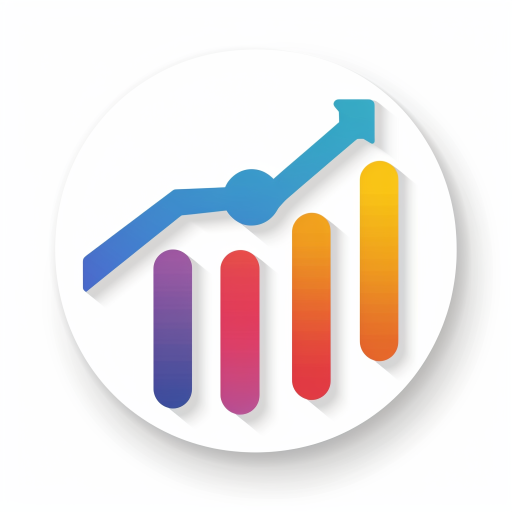Porter's Five Forces GPT-AI industry analysis for strategy.
AI-powered competitive analysis tool
Explain this framework
Ask me questions about my industry
Assess substitutes in the beverage industry
Analyse supplier power in fashion
Related Tools
Load More
Market Research and Competitive Analysis GPT
Expert assistant for cutting-edge marketing insights and analysis, using APIs to Wolfram and other strategic sources. Continually being refined. Thank you for your support!

Startup Competitor Analysis & Market Research GPT
Use this GPT to learn how to research your competition and get a better understanding of your market

Competitor Analysis GPT
Provides competitor analysis and strategic market insights

Competitive Analysis GPT
Analyze your competitors and get valuable insights on how to improve your business/product/service.

Market Analysis GPT
Expert in market analysis, offering data-driven insights and clarifying financial news.

Market Maverick GPT
A GPT designed to be your quant in all things stocks, trading, trends, and more.
20.0 / 5 (200 votes)
Introduction to Porter's Five Forces GPT
Porter's Five Forces GPT is designed as a specialized tool for analyzing competitive and industry dynamics through the lens of Michael E. Porter's Five Forces framework. This framework focuses on five critical factors that shape competition: Competitive Rivalry, Threat of New Entrants, Threat of Substitutes, Bargaining Power of Suppliers, and Bargaining Power of Customers. The GPT is built to deliver in-depth, nuanced industry analysis by interpreting these forces for specific business contexts. It evaluates how strong or weak each force is in shaping industry dynamics, identifying opportunities and threats to help businesses strategize effectively. For instance, in an industry like pharmaceuticals, where barriers to entry are high due to patents and regulatory approvals, the analysis would highlight how these factors protect incumbents from new competitors, compared to a tech industry where new entrants might be more frequent.

Main Functions of Porter's Five Forces GPT
Competitive Rivalry Analysis
Example
In the airline industry, where multiple airlines compete fiercely on price and service, the Competitive Rivalry force would examine market saturation, price wars, and brand loyalty to determine how rivalry affects profitability.
Scenario
A business considering expansion into a new geographic market can use this analysis to understand the intensity of competition and whether the market is fragmented or dominated by a few large players.
New Entrants Risk Assessment
Example
For the retail coffee industry, which has relatively low barriers to entry, this analysis would explore the ease with which new competitors can enter the market, such as new local cafés or large brands like Starbucks expanding their reach.
Scenario
A small coffee chain could use this function to evaluate the risk posed by new entrants and adjust its pricing or loyalty programs to maintain its customer base.
Supplier Power Evaluation
Example
In the automotive industry, where suppliers of raw materials like steel or microchips hold significant power, this function assesses how supply disruptions or price hikes can influence a company's production costs.
Scenario
An automotive manufacturer could leverage this analysis to assess the risk of increasing raw material costs and consider diversifying its supplier base to mitigate dependence on a single supplier.
Ideal Users of Porter's Five Forces GPT
Corporate Strategists and Decision Makers
Corporate strategists in large firms benefit from using this GPT to assess industry conditions, formulate competitive strategies, and guide high-stakes decisions such as mergers, acquisitions, or market entries. They can derive insights into competitive positioning and industry trends, enabling more informed strategic planning.
Small Business Owners and Entrepreneurs
Small business owners can use this GPT to gain a deep understanding of the competitive landscape before launching a new product or service. Entrepreneurs, especially in fast-evolving industries like tech or consumer goods, will benefit from assessing the risks of competition, entry barriers, and potential substitutes in their market niche.

How to Use Porter's Five Forces GPT
Visit aichatonline.org for a free trial without login, also no need for ChatGPT Plus.
Start by accessing the website where you can try the tool without requiring any account or subscription.
Gather Industry-Specific Data
Prepare key details such as the industry, companies involved, competitive landscape, and any relevant market data for more accurate analysis.
Interact with the GPT
Ask the tool for a competitive analysis using the Porter's Five Forces framework. Provide the necessary context for precise insights.
Review the Detailed Report
The GPT will analyze the data and offer a comprehensive assessment covering competitive rivalry, supplier power, buyer power, threat of new entrants, and substitutes.
Refine Your Strategy
Use the insights to adjust business strategies, mitigate risks, and explore new opportunities. You can also ask follow-up questions to deepen the analysis.
Try other advanced and practical GPTs
Plain Writer
AI-powered sentence simplification tool.

✍️StableDiffusion Prompt Generator
AI-powered prompts for perfect images

KPI Builder
AI-powered KPI recommendations for startups

PDF Translator
AI-Powered Translations for Your PDFs

RunwayML
AI tools to unlock creativity.

ConciseGPT
AI-powered concise responses

Original Meme Master
AI-powered tool for instant meme creation.

ツクルちゃん
AI-powered customizable prompt creator

Sophie
AI-powered assistance for your technical and creative needs.

Dark Fantasy GPT
Unleash Imagination with AI Power.
BroadcastNewsGPT
AI-driven creativity for marketing brilliance.

ChatPaper
AI-powered academic paper summarizer.

- Market Analysis
- Business Strategy
- Strategic Planning
- Industry Research
- Competitive Insight
Common Q&A about Porter's Five Forces GPT
What is Porter's Five Forces GPT?
Porter's Five Forces GPT is an AI-powered tool designed to provide in-depth industry analysis using Michael Porter's Five Forces framework. It helps businesses and analysts evaluate competitive pressures and market dynamics to inform strategic decisions.
How does this tool analyze industry competition?
The tool evaluates industry competition by examining the five forces: the threat of new entrants, threat of substitutes, bargaining power of suppliers, bargaining power of buyers, and the intensity of competitive rivalry. It provides a structured breakdown of these forces based on the input data you provide.
Can I use this tool for academic purposes?
Yes, the tool is well-suited for academic research and case studies, offering detailed analyses of market forces and competitive structures across various industries. It's ideal for students and educators studying business strategy.
What kind of data do I need to provide for the best results?
For the most accurate analysis, it's important to provide industry-specific details such as the market size, key players, supplier relationships, and customer segments. The more detailed the input, the better the insights.
How can businesses benefit from using this tool?
Businesses can use Porter's Five Forces GPT to assess market opportunities, identify potential threats, and develop strategies to gain competitive advantage. It helps companies understand their industry position and make informed strategic decisions.